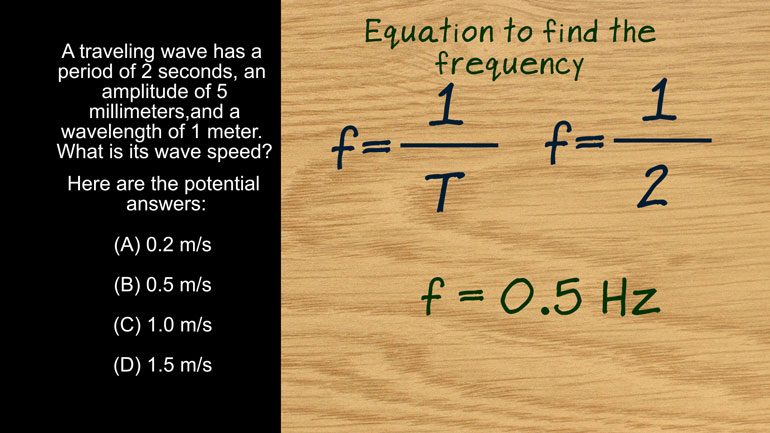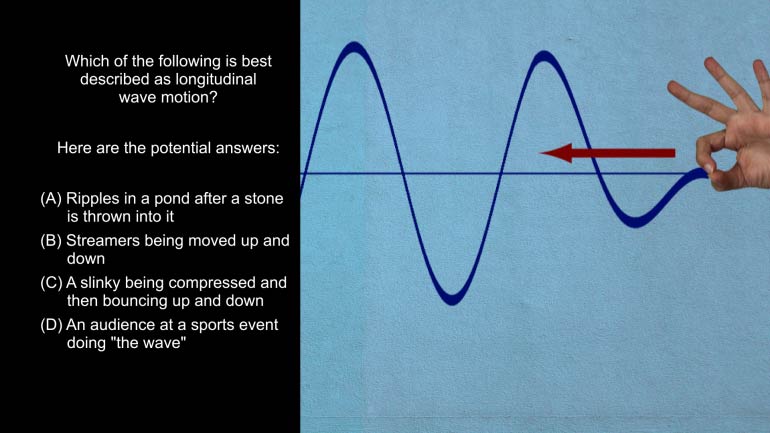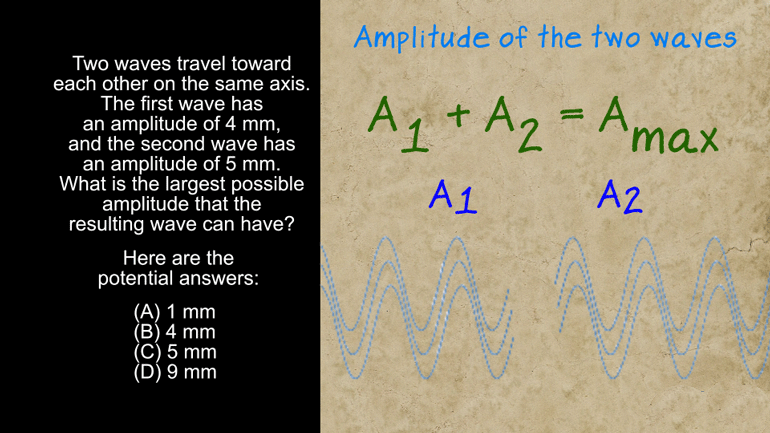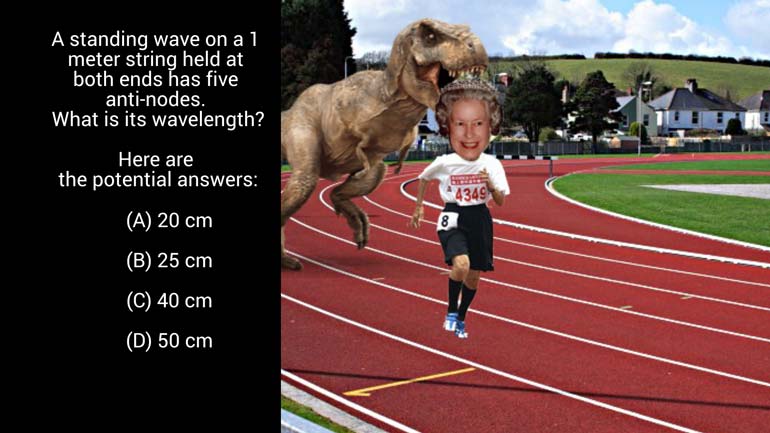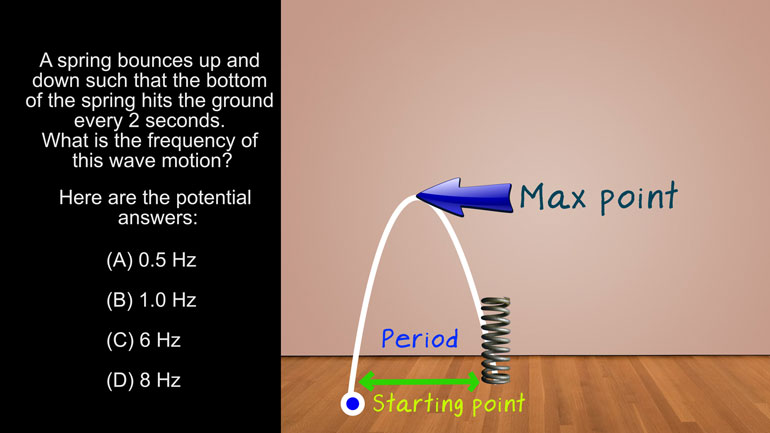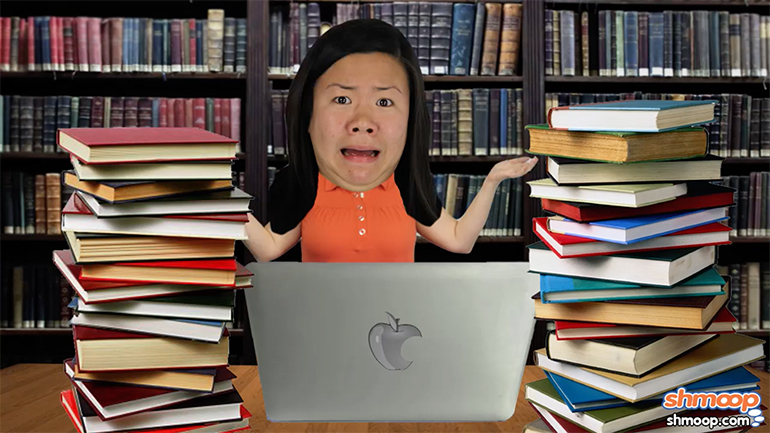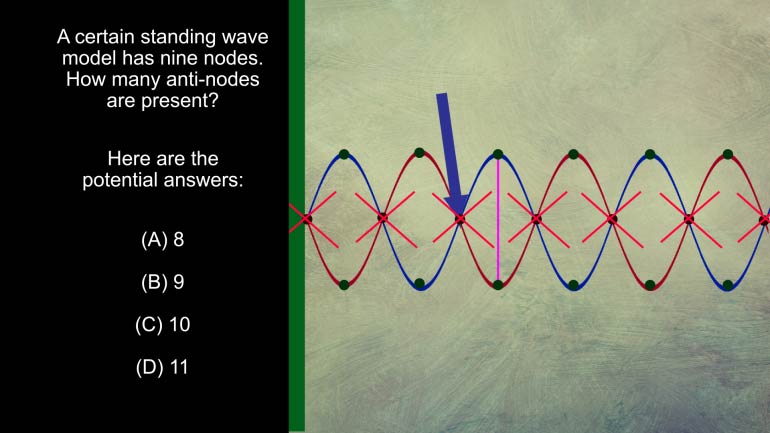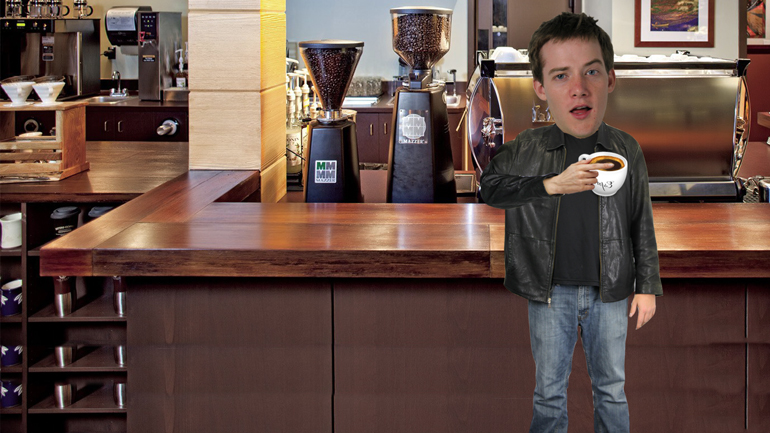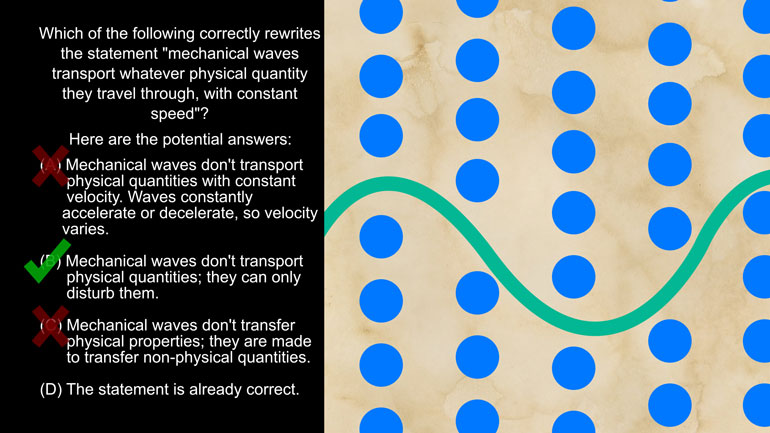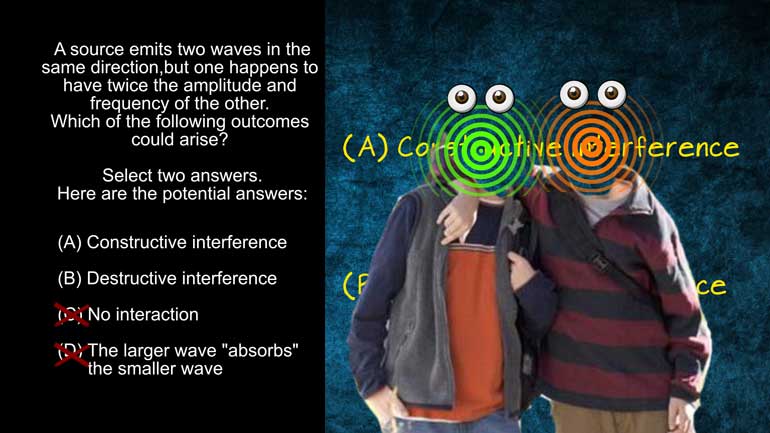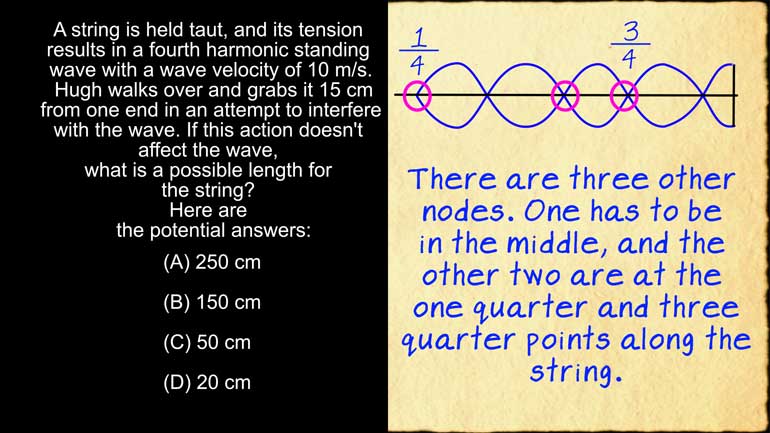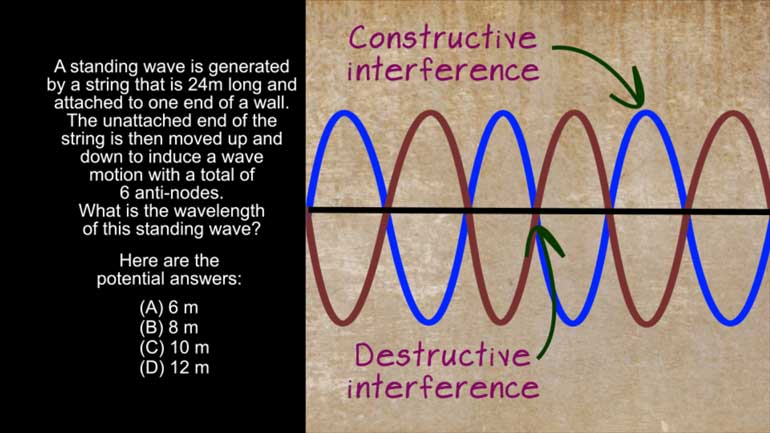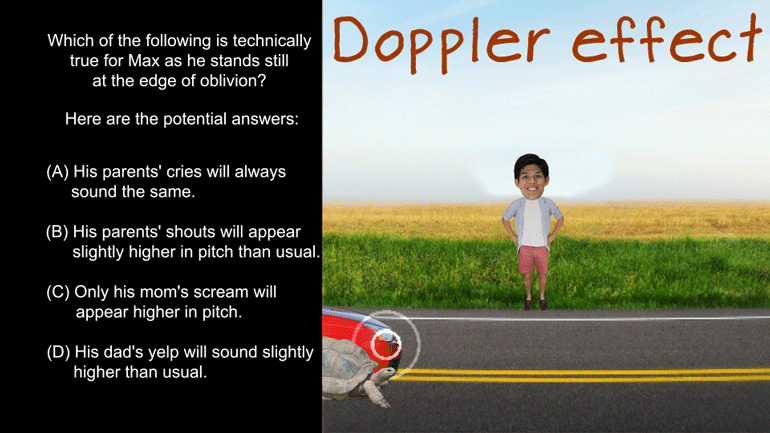ShmoopTube
Where Monty Python meets your 10th grade teacher.
Search Thousands of Shmoop Videos
Waves Videos 15 videos
AP Physics 1: 2.3 Waves. Which of the following is best described as longitudinal wave motion?
AP Physics 1: 2.1 Waves. What is the largest possible amplitude that the resulting wave can have?
AP Physics 1: 1.5 Waves 12 Views
Share It!
Description:
AP Physics 1: 1.5 Waves. What can possibly occur when the two waves reach each other?
Transcript
- 00:04
And here's your shmoop du jour brought to you by superposition
- 00:07
which of course is when Superman does yoga yeah like that..check out the [Superman doing yoga]
- 00:12
following diagram....two waves of equal amplitude move [A diagram of waves on a laptop screen]
- 00:17
toward each other with equal velocity when they reach each other which of the
- 00:22
following can possibly occur? it's like two answers [pause button and car beeps]
Full Transcript
- 00:31
all right so what happens
- 00:32
when two waves of run into each other along their travel do they crash into [two cars collide with each other]
- 00:37
each other like cars and stop moving or do they keep on moving like nothing
- 00:41
happened because well they're just that chill well the answer is all of the
- 00:45
above they crash into each other and they also keep moving wait they crash [cars collide and continue moving in opposite directions]
- 00:50
into each other and they keep moving yeah waves are weird like that they're
- 00:55
kind of oblivious to the material world and just keep moving like us when we're [man studying while walking around a bedroom]
- 00:59
studying for a big test like that remember that a wave travels through a
- 01:03
medium but it doesn't transport it so when two waves collide matter isn't [waves colliding]
- 01:08
colliding just energy is colliding the energy keeps on moving after the
- 01:14
collision so answer A; not one of the right choices when waves do collide then
- 01:20
we're dealing with superposition well superposition means that colliding waves
- 01:24
will combine to make one single wave at the moment of collision the wave that [Two waves combine to form a single wave]
- 01:29
results from the collision will equal the sum of the component waves and how
- 01:33
the waves interact with each other is known as interference well interference [A wave in a phonebox and a phone outside of the phonebox]
- 01:37
can be constructive or destructive kind of like criticism except less likely to
- 01:42
make us cry/ Constructive interference occurs when waves of the same sign
- 01:46
collide the amplitudes of the waves combine to form a larger amplitude like [Two positive waves collide forming a larger amplitude wave]
- 01:52
that it's bigger and bigger destructive interference is what happens when a
- 01:55
positive wave collides with a negative wave like flattens it out in this case
- 02:01
the waves add up to have a smaller amplitude because they cancel each other
- 02:05
out the ways have to have the same amplitude to cancel each other out [Waves cancel each other and flat line appears]
- 02:08
completely so our correct answers are B and C either of these are
- 02:13
possible, depending on whether the waves have the same sign or if they don't and
- 02:17
we've seen that waves do interact so D is definitely not correct but after they [People with waves for bodies interacting in a street]
- 02:23
meet the waves just keep on rolling, yeah waves are just zen like that and no
- 02:27
Superman doesn't actually do yoga that's because the well the lotus position is
- 02:31
his kryptonite.. Ow! [Superman in the lotus position]
Related Videos
AP Physics 1: 1.4 Waves. Which of the following is technically true for Max as he stands at the edge of oblivion?
AP Physics 1: 1.4 Changes and Conservation Laws. Find the current across R2.
AP Physics 1: 2.4 Changes and Conservation Laws. Which of the following circuits should the students use?
AP Physics 1: 2.2 Waves. What's the wavelength of this standing wave?
